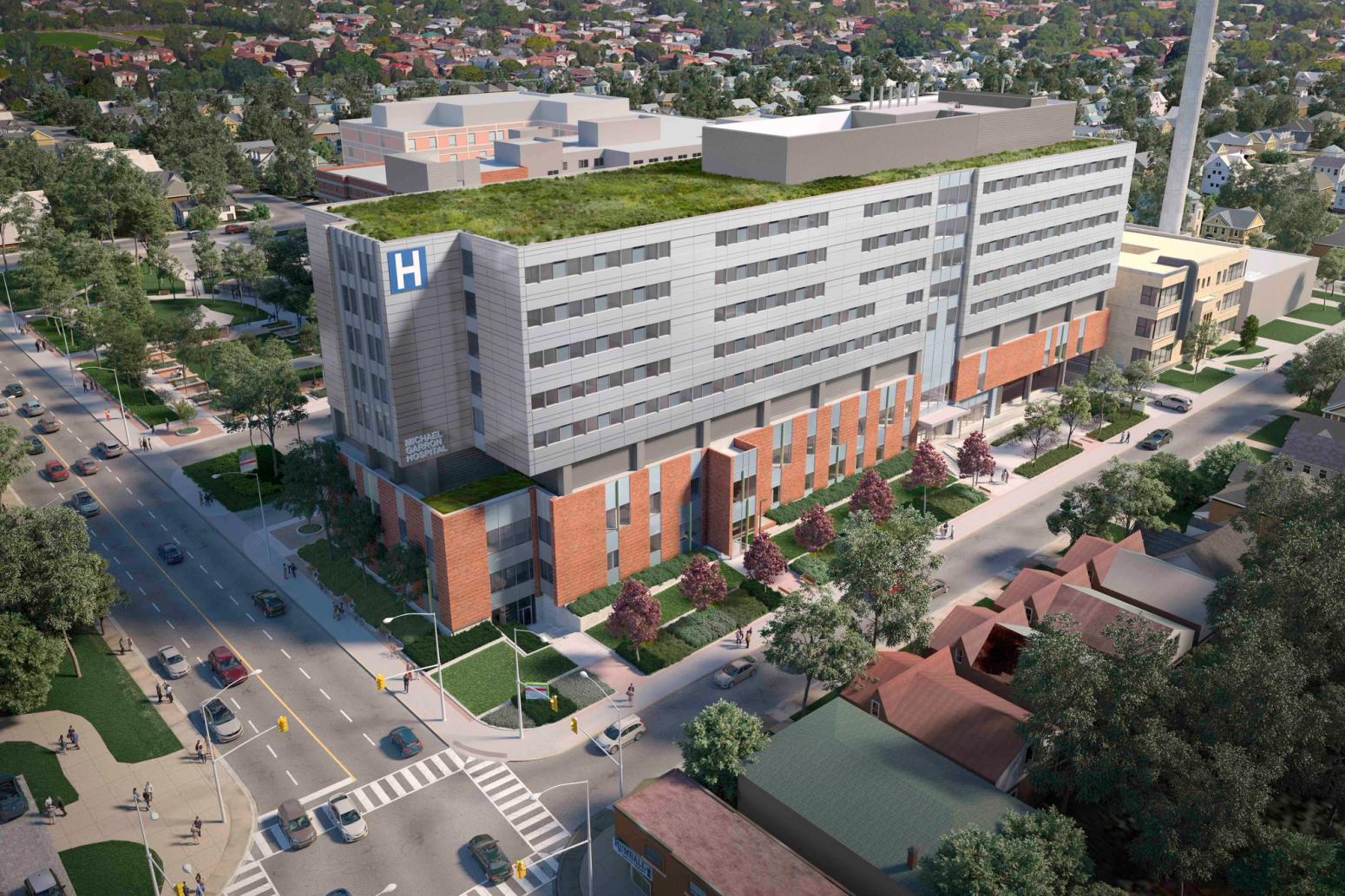Jun 27, 2020
Spotlight
New Toronto Courthouse (FA)
Client: Infrastructure Ontario and Ministry of the Attorney General
Location: Toronto, Ontario, Canada
Delivery Model: Public-Private Partnership: Design-Build-Finance-Maintain
Size: 690,000 sq. ft.
Value: $505 million
Project Highlights
- 2019 National Awards for Innovation and Excellence in Public-Private Partnerships—Silver Award under the Project Development category.
- The NTC Project includes the first Indigenous Learning Centre in an Ontario courthouse. This space offers opportunities for the public, justice workers, and students to learn about Indigenous history and issues related to the justice system in Ontario.
- Designed to achieve LEED® Silver Certification.
The New Toronto Courthouse (NTC) is the first high-rise, Design-Build-Finance-Maintain (DBFM) courthouse project in Ontario. The new courthouse for the Ministry of the Attorney General (MAG) amalgamates six Ontario Court of Justice criminal courthouse locations and associated spaces into one building.
Located in the judicial precinct adjacent to Toronto City Hall, NTC will be an 800,000 sq. ft, 19-story facility with 63 new judicial hearing rooms (53 courtrooms, including a multiple accused, high-security courtroom, and 10 conference/settlement rooms), as well as associated program spaces such as judicial chambers and support, Crown attorneys, Police Court Bureau, prisoner handling, Court Services Division, Victim/Witness Assistance Program, Counsel Services, public services, building services and judicial/program parking.
EllisDon Capital Inc. (EDC) is the Developer Lead, 100% Equity Provider, and Financial Advisor on the NTC Project. As Financial Advisor, EDC was responsible for financial modeling, running a funding competition to select the most competitive lenders, and structuring the financing solution.
EllisDon Capital acted as the financial advisor to develop and implement a comprehensive financial plan for the consortium that included a long-term private placement negotiated directly with the end investor, a short-term Senior Credit Facility, and equity contributions. All equity for the project will be provided by EllisDon Capital at the end of the construction period.
During the development phase of the bid, EllisDon Capital ran a competition among two experienced bond underwriters and five private placement lenders for the long-term private capital. The large pool of private placement lenders that participated in the process was unprecedented and reinforced EDI’s commitment to facilitate competitive tension that ultimately drives down borrowing costs.
The long-term private placement from Sun Life Investment Management is a fixed-rate instrument, and the short-term bank facility from the National Bank of Canada and the Bank of Nova Scotia is a floating rate loan swapped to a fixed rate using interest rate swaps. As a result, the project company is insulated from floating rate risk exposure, which provides significant cost certainty for the NTC Project.
NTC had high maintenance and lifecycle requirements relative to the capital cost (and therefore long-term private capital) of the project. This resulted in high “operational gearing”, which made it difficult to achieve the cost break-even ratios that might be required by rating agencies. As Financial Advisor, EllisDon Capital identified this issue early in the Request for Proposals process and mitigated it by selecting a long-term financing solution that didn't require an external credit rating. EllisDon Capital worked closely with the end investor to ensure coverage ratios and break-even metrics struck an optimal balance of being efficient from a value-for-money perspective while also remaining acceptable from a credit perspective.
The NTC Project was delivered using Infrastructure Ontario’s Public-Private Partnership (P3) method. This method transfers most project risks to the private sector partner, EllisDon Infrastructure. The project financing was highly leveraged to ensure the lowest available cost of capital, using approximately 92.5% debt and 7.5% equity.
The Value for Money report completed for the NTC Project indicates that by using the P3 method in comparison to a traditional delivery model, the NTC Project demonstrates an estimated cost savings of 22.67% or $228.7 million.
The NTC Project exemplifies Infrastructure Ontario’s P3 model of value, timeliness, and accountability by demonstrating that value for money can be achieved without compromising design excellence.






